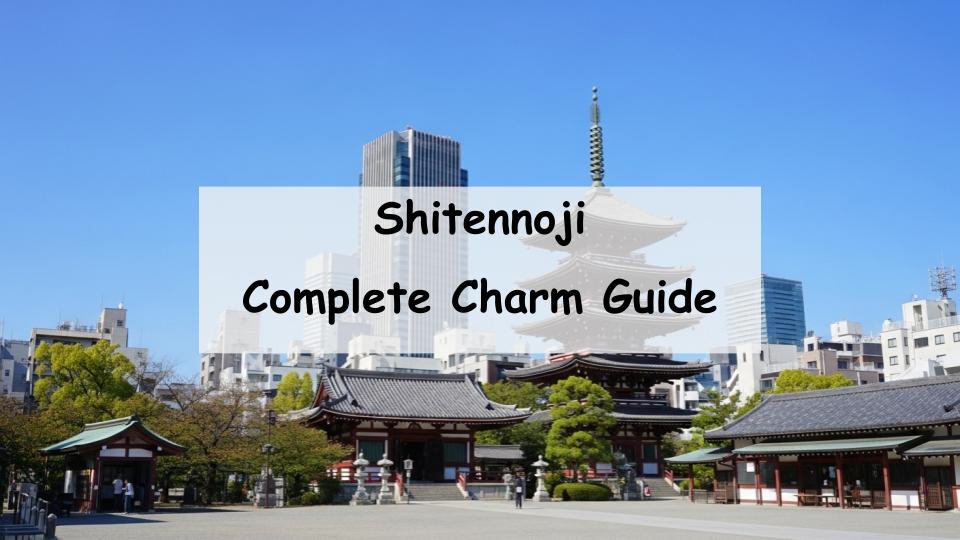Are you wondering, “What kind of temple is Shitennoji?” “How is it different from other temples?” or “What should I see on my first visit?” Shitennoji is Japan’s oldest official temple, offering a unique opportunity to experience Prince Shotoku’s philosophy and the origins of Japanese Buddhism. The grounds feature historic architecture and impressive Buddhist statues, blending a solemn atmosphere with cultural traditions deeply connected to daily life. This article will guide you through Shitennoji’s history, religious background, key architectural highlights like the five-story pagoda and main halls, as well as access information and nearby attractions. If you want to enjoy Osaka sightseeing more deeply, please read on.
- What is Shitennoji? History and Basic Information
- Exploring Shitennoji: Must-See Highlights
- Cultural Treasures and Buddhist Art at Shitennoji
- Annual Events and Festivals at Shitennoji
- Getting to Shitennoji and Tips for Visitors
- Best Times and Seasons to Visit Shitennoji
- Tips to Enjoy Your Visit to Shitennoji
What is Shitennoji? History and Basic Information
Prince Shotoku and the Founding of Shitennoji
Shitennoji was founded in 593 by Prince Shotoku, who is revered as a pioneer of Buddhism in Japan. The temple was established as a symbol of peace and to promote Buddhism as a unifying spiritual force.
Role as Japan’s Oldest Official Temple
As the oldest government-sponsored temple, Shitennoji played a central role in religious and political life, influencing Japanese culture for centuries.
Reconstruction History and Architectural Features
Though originally built in the 6th century, Shitennoji has been rebuilt multiple times due to fires and wars. Its current structures reflect traditional architectural styles and provide a window into Japan’s historical aesthetics.
Exploring Shitennoji: Must-See Highlights
The Main Compound: Five-Story Pagoda, Kondo (Main Hall), and Kodo (Lecture Hall)
The central complex of Shitennoji includes the iconic five-story pagoda and the main hall, which are outstanding examples of Buddhist temple architecture, exuding both spiritual significance and artistic beauty.
The Stone Torii Gate and Unique Temple Layout
The stone torii gate at Shitennoji is a distinctive feature, marking the entrance and contributing to the temple’s unique spatial design that differs from typical shrine layouts.
Shitennoji’s Gardens and Scenic Ponds
The Pure Land Garden (Jodo Garden)
This serene garden represents the Buddhist ideal of paradise and offers visitors a tranquil space to reflect and enjoy nature.
Turtle Pond (Kamei-do) and Its Origin
The turtle pond is a historic feature tied to temple lore, symbolizing longevity and good fortune.
Cultural Treasures and Buddhist Art at Shitennoji
Important Statues and Treasures Housed at the Temple
Shitennoji holds many valuable Buddhist statues and artifacts, some of which are regularly displayed for the public.
Regular Exhibitions and Special Events
Visitors can experience changing exhibitions and special displays that highlight the temple’s rich heritage.
Religious Ceremonies and Cultural Activities
The temple remains a vibrant center for traditional Buddhist rites and community events throughout the year.
Annual Events and Festivals at Shitennoji
The 21st Monthly Daishi Festival (Kobo Market)
Held every month, this lively market features local vendors and traditional offerings.
Spring and Autumn Equinox Ceremonies
These important seasonal events commemorate ancestors and the changing of the seasons.
Special Rituals Like the Setsubun Festival
Participate in unique cultural experiences such as the Setsubun bean-throwing ceremony for warding off evil spirits.
Getting to Shitennoji and Tips for Visitors
How to Access by Train, Bus, or On Foot
Shitennoji is easily reachable via Osaka’s public transport system, with convenient bus routes and nearby train stations.
Parking and Transportation Around the Area
For those driving, parking options are available near the temple, and local transport services make it easy to explore the surrounding area.
Nearby Attractions and Combined Tour Plans
Routes Covering Tennoji Park and Abeno Harukas
Combine your visit with trips to these popular spots for a full day of sightseeing.
Best Times and Seasons to Visit Shitennoji
Seasonal Attractions and Landscape Changes
Spring and autumn are especially beautiful times to visit, with blooming flowers and colorful foliage.
How to Avoid Crowds
Early mornings and weekdays are recommended for a more peaceful experience.
Ideal Times for Photography
Golden hour light enhances the temple’s beauty, perfect for capturing memorable photos.
Tips to Enjoy Your Visit to Shitennoji
Admission Fees, Opening Hours, and Holidays
Information on tickets, daily schedules, and closures helps plan your trip efficiently.
Photography Rules, Dress Code, and Manners
Respectful behavior and guidelines ensure a pleasant visit for all.
Facilities for Foreign Visitors, Families, and Seniors
Shitennoji offers accessibility and amenities to accommodate diverse visitors.











Comment